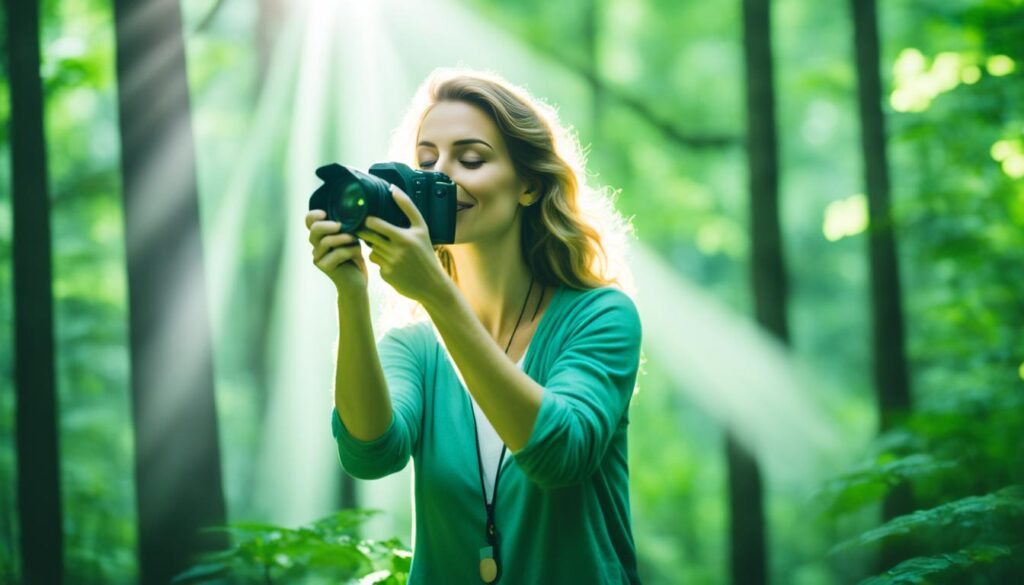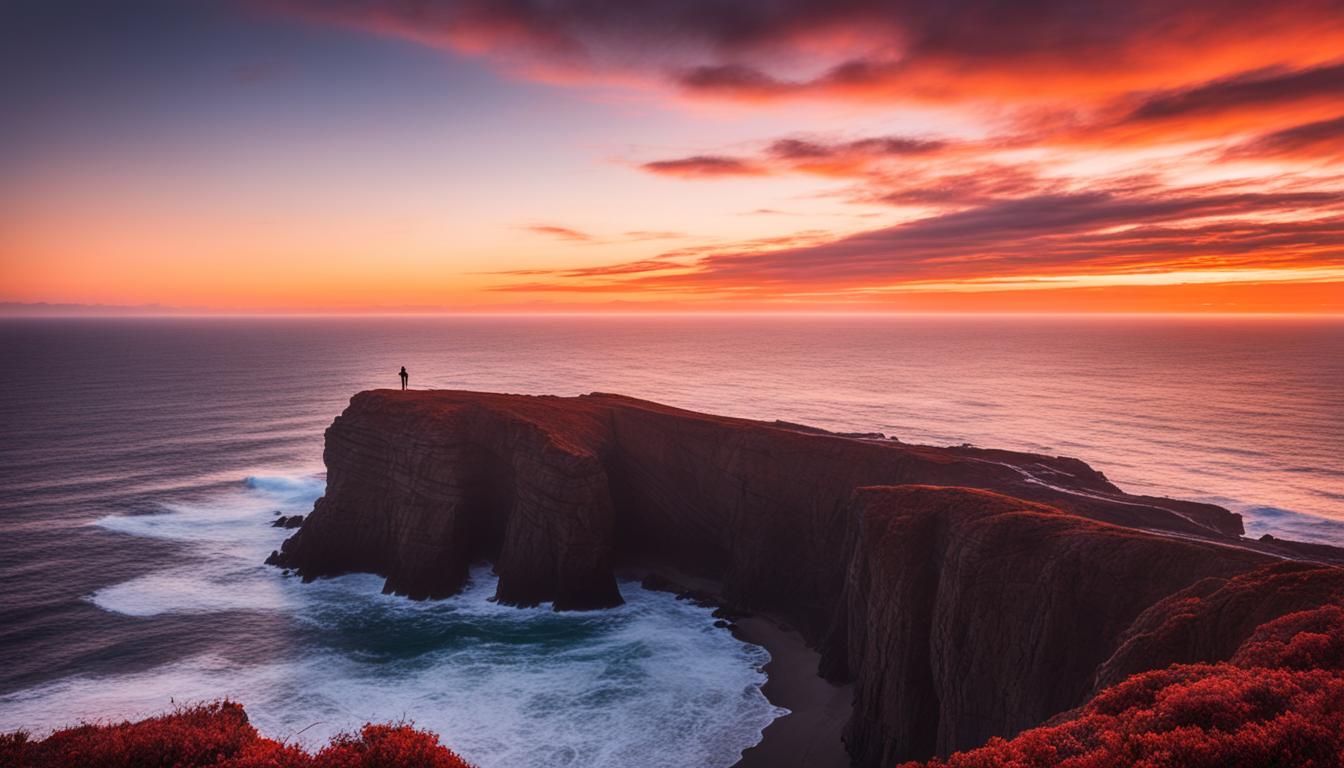Have you ever wondered how photographers are able to capture those fleeting moments that seem to last forever? How do they freeze time in a single frame and transport us to a different world? The art of photography is a powerful tool that allows us to capture moments and preserve memories in a way that no other medium can. Join us as we delve into the fascinating world of photography, exploring the techniques, tips, and creative ideas that professionals use to create compelling images.
Key Takeaways:
- Photography is an art form that allows us to capture and preserve moments in time.
- Professional photographers have mastered various techniques to capture the perfect shot.
- Creative photography ideas can enhance storytelling and create visually stunning images.
- Photography has a significant impact on society, allowing us to tell stories and connect with others.
- Photography is a form of expression that allows individuals to capture their passions and emotions.
The Origins and Evolution of Photography
Photography has a rich history that dates back to the early 19th century, starting with the invention of the camera obscura. This precursor to photography was a simple device that projected images onto a surface through a small hole, capturing the outside world.
In 1839, two pioneers in the field, Louis Daguerre and William Henry Fox Talbot, independently developed their photographic processes. Daguerre’s daguerreotype and Talbot’s calotype marked significant milestones in the invention of photography. These early techniques opened up new possibilities for capturing and preserving images with unprecedented accuracy.
Technological advancements have revolutionized the art of photography over time. In the early years, cameras were large, cumbersome devices that required lengthy exposure times. However, with each passing decade, advancements brought about more compact and versatile cameras.
Towards the end of the 20th century, the introduction of digital cameras and smartphones marked a new era in photography. These technological marvels allowed for instant image capture, easy editing, and convenient sharing. Today, virtually anyone with a smartphone has the power to capture and create stunning photographs.
The evolution of photography has made it more accessible and inclusive. Enthusiasts and professionals alike can explore their creative visions and document the world around them with ease.
Photography’s journey from the camera obscura to modern digital cameras and smartphones reflects the relentless pursuit of capturing moments in time. Technological advancements have propelled this art form into new frontiers, allowing photographers to push boundaries and capture images that were once unimaginable.
The Power of Visual Storytelling in Photography
Photography is more than just capturing a beautiful scene; it’s about telling a story through images. A well-composed photograph has the power to evoke emotions and engage viewers, allowing them to connect with the narrative portrayed. With the right composition techniques and attention to detail, a photographer can create visual stories that leave a lasting impact.
Composition, lighting, color, and perspective are essential elements in creating compelling visual narratives. By carefully arranging the elements within the frame, a photographer can guide the viewer’s eye and convey a specific message or mood. One crucial technique that aids in visual storytelling is the use of the rule of thirds. By dividing the frame into a 3×3 grid and aligning key elements along the intersecting lines or at the intersections themselves, photographers can create balance and harmony in their compositions.
Leading lines are another effective composition technique that can guide the viewer’s gaze and create a sense of movement and depth. By incorporating diagonal lines or using elements in the scene to lead the viewer’s eye towards a focal point, photographers can create a visual journey within the image, enhancing the narrative and adding dynamic energy.

Photography has a unique ability to convey emotions and capture fleeting moments that words alone cannot. Whether it’s a candid shot on the street or a carefully crafted photojournalistic image, visual storytelling through photography transcends language and cultural barriers, touching the hearts of viewers worldwide.
Visual storytelling is employed in various genres of photography. In photojournalism, powerful images can document real-life events and elicit empathy or action. From capturing social issues to moments of joy and triumph, photojournalists use their skills to bring attention to stories that matter.
Street photography is another genre that thrives on visual storytelling. By observing and capturing candid moments in public spaces, street photographers reflect the essence of a city or a community, giving viewers a glimpse into the world through their unique perspective.
Photographers also use visual storytelling in personal projects to convey their emotions or tell their own stories. A self-portrait series, for example, can be a intimate exploration of one’s identity, capturing feelings and experiences in a deeply personal and evocative way.
Photography Composition Tips for Powerful Visual Storytelling:
- Consider the rule of thirds and use it to guide your compositions.
- Look for leading lines or elements that can lead the viewer’s eye through the image.
- Experiment with different angles and perspectives to create unique visual narratives.
- Be mindful of lighting and how it can enhance the mood and storytelling of your images.
- Use color to evoke emotions and convey different narratives.
- Pay attention to the placement of subjects and objects within the frame to create balance and harmony.
By mastering the art of visual storytelling through photography, photographers can create images that resonate with viewers on a deeper level, evoking emotions and leaving a lasting impression.
Photography as a Form of Expression
Photography is more than just a way to capture beautiful scenes; it is a powerful form of expression that allows individuals to convey their passions, emotions, and unique perspectives. Through the lens of a camera, photographers can capture moments that reflect their joys, fears, and aspirations, creating visual narratives that speak volumes.
Engaging in photography can have therapeutic benefits, providing an outlet for individuals to explore their inner thoughts and emotions. As they focus on framing and capturing the perfect shot, photographers find solace and a sense of calm. It becomes a form of self-expression and a way to process and communicate one’s innermost feelings.
Just as a poet uses words and a painter uses a brush, photographers use their camera to tell their story. Each photograph becomes a visual diary, a testament to their experiences, dreams, and moments of vulnerability. It is through this medium that they can authentically share their stories with the world, connecting with others through the shared language of imagery.
“Every photograph I take is a reflection of who I am, what I believe in, and the emotions I carry within. It is my way of expressing myself beyond words.”
– John Adams, Photographer
In addition to personal expression, photography also offers a platform to raise awareness and ignite change. Thought-provoking images capture the attention of audiences, sparking conversations and inciting action. They have the power to evoke empathy, challenge societal norms, and bring attention to important social issues.
Capturing Passions and Emotions
Photography allows individuals to capture not only moments but also the essence of their passions and emotions. Whether it is the intense concentration of a musician lost in their music or the pure joy radiating from a child’s laughter, photographs immortalize these fleeting feelings.
The artistry of photography lies in the ability to freeze these emotions in time, preserving them for generations to come. A single photograph can evoke a range of emotions, transporting viewers to that specific moment and allowing them to experience the same feelings captured within the frame.
Therapeutic Benefits of Photography
Participating in photography has been proven to have therapeutic benefits for individuals of all ages. The act of focusing on composition, lighting, and capturing the perfect shot provides a form of mindfulness, allowing photographers to momentarily escape from the noise of daily life and immerse themselves in the present moment.
Photography can also serve as a cathartic release, enabling individuals to channel their emotions and find healing through visual storytelling. It offers a way to confront, process, and transform challenging experiences, transforming pain into art and resilience.
Research has shown that engaging in creative activities, such as photography, can reduce stress, improve mood, and enhance overall well-being. It is a therapeutic practice that encourages self-reflection, personal growth, and a deeper understanding of oneself and the world.

Conclusion (The Art of Photography: Capturing Moments in Time)
Photography, as an art form, holds immense power in preserving memories and documenting history. Through the lens of a camera, iconic photographs have become everlasting symbols of significant moments that shape our society and help us understand our collective roots.
One of the remarkable aspects of photography is its ability to transcend language and culture, serving as a universal language that connects people worldwide. Whether it’s a breathtaking landscape, a candid portrait, or a powerful documentary image, photography has the innate power to evoke emotions and tell stories that resonate with individuals from different walks of life.
But photography is not only a means of capturing the world around us; it is also an avenue for artistic expression. It allows individuals, both professional photographers and enthusiastic hobbyists, to unleash their creative visions, convey their passions, and explore their unique perspectives. Photographs are not mere pixels on a screen or pieces of paper; they are a testament to the human imagination and the limitless possibilities of visual storytelling.
Whether it’s the preservation of personal memories, the impact on society, or the pursuit of artistic expression, photography remains a powerful art form that continues to shape and inspire our lives. Through the click of a shutter, we freeze moments in time, create lifelong memories, and leave behind a visual legacy that will endure for generations to come.
FAQ (The Art of Photography: Capturing Moments in Time)</h2> <div> <h3>What are some essential photography tips for capturing great moments?
How can I improve my photography composition?
How can I master light in photography?
What are some creative photography ideas to tell a story through images?
How can I capture and preserve memories through photography?
Source Links
- ps://www.gotcreativemedia.com/
Keyword
Art of Photography, Capturing Moments ,Photography
The Art of Photography,Capturing Moments in Time



